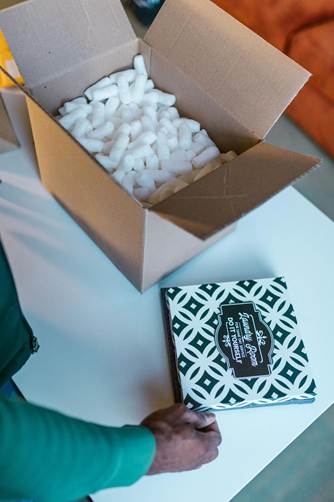
As our lives evolve and expand, the need for effective and efficient storage solutions becomes increasingly vital. Whether you’re downsizing, moving, or simply looking to declutter your home, understanding the various types of storage options available to you is essential. This guide explores several storage solutions to match different needs and circumstances, emphasizing key factors to help you make an informed choice.
Assessing Your Storage Needs
The first step in finding the right storage solution is to assess your specific requirements. Are you storing furniture, documents, seasonal items, or vehicles? The nature of your belongings will largely determine the type of storage you should consider. If you’re storing items that are sensitive to temperature and humidity, you might want to look into climate-controlled storage, which provides a stable environment that prevents damage. Consider the length of time you'll need storage. Short-term storage needs might call for a more accessible and flexible solution, whereas long-term storage may benefit from options that prioritize security and environmental protection. Understanding your timeline can shed light on the kind of facility and plan that suits you best.
Types of Storage Solutions
Storage solutions can be broadly categorized into several types, including self-storage units, mobile storage containers, and specialized facilities. Each of these options comes with its own set of advantages, catering to various customer needs. Self-storage units are popular because they offer versatility. You can select a unit size that fits your needs, and you have control over how and when you access your belongings.
Mobile storage containers, on the other hand, provide a convenient way to store items at your location. These units can be delivered to your home, filled at your own pace, and then relocated to your desired location or kept at the service provider's facility. This can be particularly beneficial for those who are moving or want to avoid multiple trips to a fixed storage location.
For items that require special conditions, such as art, antiques, or vital documents, specialized facilities offer the best protection. These storage options often come equipped with security systems, climate control, and fire safety features to ensure the integrity of sensitive items. The choice among these solutions hinges on your personal situation and what types of items you’ll be storing.
Key Considerations
When selecting a storage solution, several key factors merit consideration. Security should be a top priority, particularly for valuable or irreplaceable items. Look for facilities that provide gated access, video surveillance, and on-site personnel to ensure constant monitoring. Many modern storage facilities offer individual unit alarms and personal access codes, further enhancing your belongings' safety.
Cost is another major factor to weigh when evaluating storage options. Prices can vary significantly depending on location, demand, and features. Setting a budget beforehand allows you to eliminate choices that may not be feasible. Be aware of any additional costs, including insurance, which many facilities recommend to protect your possessions from unforeseen circumstances, adding another layer of security to your decision.
Access and Location
The accessibility of a storage facility can profoundly impact your experience. If you envision needing constant access to your items, choosing a location closer to your home or workplace would be ideal. Facilities that offer extended access hours or even 24-hour access provide the flexibility that many people value. For those who plan to store infrequently, location may not be as critical, allowing you to prioritize other factors such as price and security.
Another important element is the ease of logistics involved in accessing your belongings. Consider factors like whether the facility has loading docks or elevators, ample parking space, and whether the units are ground level or require stairs to access. Favoring a facility that minimizes the physical effort required to reach your storage can add convenience to your experience.
Understanding Insurance and Liability
As with any asset, the protection of your belongings in storage is paramount. Locating the right insurance to cover your stored items can be a complex matter. Most storage facilities offer a basic level of protection included in your agreement. It often pales compared to what your items are worth. Checking whether your homeowners or renters' insurance includes off-site storage is wise, as many policies extend their coverage. If not, purchasing coverage from the facility may be necessary.
Each facility will have varied liability policies so comprehending what is provided becomes vital. Before committing to a service, ensure that you read the fine print regarding liability and coverage limits. Understanding these terms can prevent future headaches if loss or damage occurs. Doing due diligence in this area will help protect your investment.
 https://www.pexels.com/photo/healthy-marketing-hand-technology-7309941/
https://www.pexels.com/photo/healthy-marketing-hand-technology-7309941/
Maintenance Tips for Long-Term Storage
Once you've selected a suitable storage solution, maintaining your items properly becomes crucial. Begin by ensuring everything is clean and dry before placing it into storage. This helps prevent mold, mildew, and unwanted odors. Use sturdy, sealed containers instead of cardboard boxes for better protection against pests and environmental fluctuations. For long-term storage, periodically check on your unit to confirm that there are no signs of leaks, damage, or infestations. Simple preventive measures like placing pallets under boxes or using moisture absorbers can go a long way toward preserving your belongings in optimal condition.
When to Upgrade Your Storage Plan
Your storage needs may evolve, making it important to reassess whether your current solution still meets your requirements. Life changes such as moving, expanding a business, or undergoing a major renovation may call for a larger unit, additional features, or a different type of storage altogether. Monitor how often you access your items and whether space is becoming cramped or underutilized. If you find your current setup inconvenient or insufficient, upgrading to a different storage plan or switching facilities could improve accessibility, organization, and value.
Investing time in researching and understanding your storage options will pay off significantly. It will help you preserve your belongings and provide you with peace of mind throughout the storage process. By taking into account your specific needs and evaluating all tangible factors, you can confidently select a storage solution that best fits your lifestyle and requirements. Whether it's choosing between self-storage options, mobile containers, or climate-controlled units, the right choice is out there, ready to accommodate your needs.









